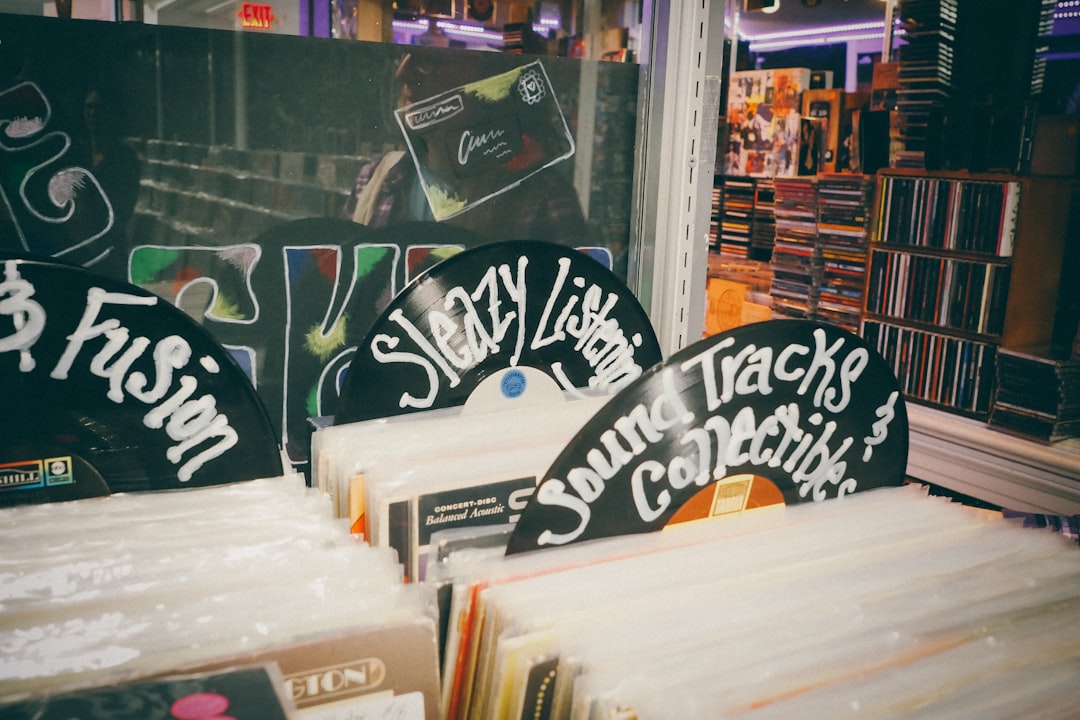The journey of vinyl records began in the late 19th century, marking a significant evolution in the way music was recorded and consumed. Initially, the phonograph cylinder was the primary medium for sound recording, but by the 1890s, flat discs began to emerge. These early records were made from shellac, a natural resin, and were limited in both duration and sound quality.
However, the introduction of vinyl in the late 1940s revolutionized the industry. Vinyl records offered a more durable and flexible alternative to shellac, allowing for longer playtimes and improved sound fidelity. The 33 1/3 RPM long-playing (LP) record became a staple in households, enabling listeners to enjoy entire albums rather than just individual tracks.
As the decades progressed, vinyl records became synonymous with popular music culture. The 1950s and 1960s saw an explosion of creativity in the music industry, with artists like Elvis Presley, The Beatles, and Bob Dylan releasing iconic albums that defined generations. The album cover art also gained prominence during this time, transforming into a canvas for artistic expression that complemented the music itself.
Vinyl records were not just a means of listening; they became cultural artifacts that encapsulated the spirit of their times.
Key Takeaways
- Vinyl records have a rich history dating back to the late 19th century, evolving from shellac to PVC material.
- The decline of vinyl records began in the 1980s with the rise of digital formats like CDs and MP3s, leading to a decrease in production and sales.
- The resurgence of vinyl in the digital age has been fueled by a renewed interest in physical music formats and a desire for a more authentic listening experience.
- Vinyl records appeal to collectors due to their unique sound quality, album artwork, and limited edition releases, making them highly sought after in the music community.
- Vinyl has made a significant impact on modern music consumption, influencing the way music is produced, distributed, and experienced by listeners.
The Decline of Vinyl and the Rise of Digital
The late 20th century marked a significant turning point for vinyl records as digital technology began to dominate the music landscape. The introduction of compact discs (CDs) in the early 1980s offered consumers a new way to experience music, boasting superior sound quality and convenience. As CDs gained popularity, vinyl sales plummeted, leading to the closure of many record pressing plants and a decline in vinyl production.
By the late 1990s, it seemed that vinyl was on the brink of extinction, overshadowed by the rise of digital downloads and streaming services. The advent of the internet further accelerated this decline. With platforms like Napster and later Spotify and Apple Music, music became more accessible than ever before.
Consumers could now listen to their favorite songs without needing to purchase physical copies. This shift not only changed how people consumed music but also altered the entire music industry’s economic model.
The Resurgence of Vinyl in the Digital Age
Despite its decline, vinyl records experienced an unexpected resurgence in the early 21st century. As digital music became ubiquitous, many listeners began to seek out tangible formats that offered a more authentic experience. This nostalgia for physical media coincided with a growing appreciation for analog sound quality, leading to a renewed interest in vinyl records.
Record Store Day, established in 2007, played a pivotal role in this revival by promoting independent record stores and encouraging artists to release exclusive vinyl editions. The resurgence was not merely a trend; it represented a cultural shift towards valuing craftsmanship and authenticity in music consumption. Vinyl records provided an opportunity for listeners to engage with their favorite artists on a deeper level.
The tactile experience of handling records, along with the large-scale album artwork, created a connection that digital formats could not replicate. This revival was further fueled by social media platforms where collectors shared their finds and experiences, fostering a vibrant community around vinyl culture.
The Appeal of Vinyl Records to Collectors
| Appeal of Vinyl Records to Collectors | Metrics |
|---|---|
| Sound Quality | Warmth and depth of sound |
| Tactile Experience | Physical interaction with music |
| Artwork and Packaging | Visual appeal of album covers and inserts |
| Collectibility | Rarity and limited editions |
| Nostalgia | Connection to music history and past eras |
For many collectors, vinyl records represent more than just music; they embody a passion for art and history. The allure of collecting vinyl lies in its tangible nature—each record is a physical artifact that tells a story. Collectors often seek out rare pressings, limited editions, or albums with unique cover art, turning their collections into personal museums that reflect their musical tastes and journeys.
The thrill of hunting for elusive records at flea markets or online auctions adds an element of excitement that digital downloads simply cannot match. Moreover, the sound quality of vinyl is often cited as a significant factor in its appeal. Audiophiles appreciate the warmth and depth of analog sound, which many argue is lost in digital formats.
This appreciation for sound quality has led to a resurgence in high-fidelity audio equipment designed specifically for vinyl playback. As collectors invest in turntables and speakers that enhance their listening experience, they often find themselves immersed in a world where music is not just heard but felt.
The Role of Vinyl in Modern Music Consumption
In today’s music landscape, vinyl records have carved out a unique niche amidst the dominance of digital streaming. While streaming services offer unparalleled convenience and access to vast libraries of music, vinyl provides an alternative that emphasizes quality over quantity. Many listeners now curate their music collections more thoughtfully, choosing to invest in physical albums that resonate with them personally rather than relying solely on playlists or algorithms.
Vinyl has also become a popular choice for artists looking to connect with their fan base on a deeper level. Many musicians release their albums on vinyl as a way to offer fans something special—an experience that transcends mere listening. Limited edition releases often come with additional artwork or exclusive content, making them highly sought after by collectors.
This trend has led to an increase in vinyl sales across various genres, from indie rock to hip-hop, demonstrating that vinyl’s appeal is broadening beyond its traditional audience.
The Impact of Vinyl on Music Production and Distribution
Vinyl Quality Takes Center Stage
This shift has prompted record labels to invest more resources into high-quality vinyl production processes, ensuring that albums are pressed with care and attention to detail. The focus on quality has become a key differentiator in the industry, with labels competing to produce the best-sounding and most visually appealing vinyl releases.
Independent Labels Thrive
The rise of independent labels has been fueled by the vinyl revival. Many small labels have emerged to cater specifically to niche markets and underground artists who may not fit into mainstream distribution channels. These labels often prioritize vinyl releases as a way to build community around their artists and create unique listening experiences for fans.
A Diverse Musical Landscape
This trend has fostered a diverse range of musical styles and voices within the industry, enriching the overall landscape of contemporary music. The vinyl revival has created new opportunities for artists to experiment and express themselves, leading to a more vibrant and eclectic musical scene.
The Revival of Record Stores and Vinyl Sales
As vinyl’s popularity has surged, so too has the revival of independent record stores across the globe. These stores have become cultural hubs where music lovers gather to share their passion for vinyl and discover new artists. Unlike big-box retailers or online marketplaces, independent record stores offer curated selections that reflect local tastes and trends.
Many store owners are deeply knowledgeable about music and can provide personalized recommendations based on customers’ preferences. Record stores have also adapted to changing consumer habits by hosting events such as live performances, listening parties, and vinyl swap meets. These gatherings foster a sense of community among collectors and enthusiasts while providing opportunities for artists to connect with their fans directly.
As more people embrace vinyl culture, independent record stores are finding new ways to thrive in an increasingly digital world.
The Influence of Vinyl on Music Culture and Community
Vinyl records have played a crucial role in shaping music culture and fostering community among listeners. The act of collecting records often leads individuals to connect with others who share similar interests, creating bonds that transcend age or background. Record fairs and conventions provide spaces for collectors to meet, trade stories, and exchange knowledge about their favorite artists or genres.
Moreover, vinyl culture encourages a sense of appreciation for music as an art form rather than just entertainment. Many collectors take pride in exploring different genres and discovering hidden gems from various eras. This exploration often leads to discussions about musical influences and historical contexts that enrich listeners’ understanding of the music they love.
In this way, vinyl serves as a bridge between generations, allowing older fans to share their experiences with younger listeners while fostering an appreciation for the rich history of recorded music.
The Future of Vinyl Records in the Music Industry
Looking ahead, the future of vinyl records appears promising despite ongoing challenges within the broader music industry. As more consumers seek out authentic experiences in an increasingly digital world, vinyl is likely to maintain its status as a cherished format among collectors and casual listeners alike. Record labels are expected to continue investing in high-quality vinyl production while exploring innovative ways to engage audiences through limited releases and exclusive content.
However, sustainability will be an important consideration moving forward. As awareness grows regarding environmental issues associated with plastic production and waste, both consumers and producers may seek more eco-friendly alternatives for vinyl manufacturing. This shift could lead to advancements in materials used for pressing records or new methods that minimize environmental impact while preserving sound quality.
The Environmental Impact of Vinyl Production and Consumption
The environmental implications of vinyl production cannot be overlooked as its popularity continues to rise. Traditional vinyl records are made from polyvinyl chloride (PVC), a type of plastic that poses significant challenges regarding sustainability and waste management.
In response to these concerns, some manufacturers are exploring alternative materials or methods that reduce environmental impact without compromising quality. For instance, biodegradable options or recycled materials may become more prevalent as consumers demand greener products. Additionally, initiatives aimed at recycling old records could help mitigate waste associated with vinyl consumption while promoting responsible practices within the industry.
Tips for Starting or Growing a Vinyl Collection
For those interested in starting or expanding their vinyl collection, several tips can enhance the experience and ensure it remains enjoyable over time. First and foremost, it is essential to invest in quality equipment—an excellent turntable paired with good speakers can significantly improve sound quality and overall enjoyment when listening to records. Next, collectors should consider focusing on specific genres or artists that resonate with them personally rather than trying to amass large quantities indiscriminately.
This approach allows for deeper engagement with each album while creating a collection that reflects individual tastes and preferences. Additionally, exploring local record stores or attending record fairs can provide opportunities to discover hidden gems while connecting with fellow enthusiasts who share similar interests. Engaging with online communities dedicated to vinyl collecting can also offer valuable insights into best practices for care and maintenance as well as recommendations for must-have albums.
In conclusion, the journey of vinyl records from their inception to their current resurgence illustrates not only changes within technology but also shifts in cultural values surrounding music consumption. As collectors continue to embrace this timeless format amidst an ever-evolving landscape dominated by digital media, it becomes clear that vinyl will remain an enduring symbol of artistry and community within the world of music.
FAQs
What is the comeback of vinyl records?
Vinyl records have experienced a resurgence in popularity in recent years, with sales steadily increasing since 2006. This comeback has been driven by a renewed interest in physical music formats and a nostalgia for the unique sound and experience of vinyl.
Why are vinyl records making a comeback?
There are several factors contributing to the comeback of vinyl records, including the tactile and visual appeal of vinyl, the superior sound quality compared to digital formats, and the resurgence of interest in vintage and retro trends.
How are vinyl records different from digital music?
Vinyl records are analog sound storage mediums that reproduce sound waves directly from the physical grooves on the record. Digital music, on the other hand, is stored and reproduced as a series of numerical values, resulting in a different sound quality and listening experience.
What are the benefits of vinyl records over digital music?
Vinyl records are often praised for their warm, rich sound quality and the tactile experience of handling and playing a physical record. Many music enthusiasts also appreciate the album artwork and liner notes that come with vinyl records.
Are vinyl records more expensive than digital music?
Vinyl records are generally more expensive than digital music, as they require physical production and distribution. Additionally, the cost of vinyl players and maintenance adds to the overall expense of collecting and enjoying vinyl records.
How can I start collecting vinyl records?
To start collecting vinyl records, you can begin by exploring local record stores, online marketplaces, and vinyl fairs. It’s important to consider the condition of the records, the quality of the pressing, and the availability of the music you’re interested in. Additionally, investing in a good turntable and audio equipment is essential for enjoying vinyl records to their fullest.






